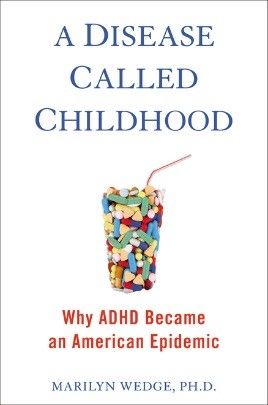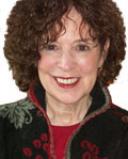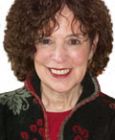ADHD
Avoiding ADHD’s Wide Net: One Parent, One Child at a Time
Alternatives to consider before accepting an ADHD diagnosis (and drugs).
Posted September 9, 2015

Justin is eight years old and his parents and grandparents think he has ADHD. At home he is irritable and difficult to manage. He doesn’t socialize well with friends at school and his academic performance doesn’t match his ability.
After spending a few days with his grandparents, Justin’s behavior does a flip-flop—he is calmer, less combative and impulsive. His grandparents are concerned that once diagnosed with ADHD, a clear possibility, Justin will be prescribed Adderall or Ritalin. Given the current trend of putting young children on stimulant or similar medications, Justin’s grandparents are probably correct.
The number of children diagnosed with ADHD is staggering. Some 11 million young children and high school students in this country are labeled ADHD and two-thirds of them take stimulant drugs. These are stunning numbers, frightening if you have a young child diagnosed with ADHD who may wind up taking one of these drugs, often for life. They can have some very unpleasant side effects and are addictive.
Have We Been Misled?

In less than 30 years, the ADHD “disorder” that applied to 3 percent of US children in 1987 skyrocketed to 11 percent and growing. Not so in other countries, making it a uniquely American epidemic. In her book, A Disease Called Childhood: Why ADHD Became an American Epidemic, Marilyn Wedge, PhD, a family therapist, explains the explosion in detail and offers sensible and, in many cases, must-try alternatives when parents are urged to use drugs to alter what might be an emotional or behavioral problem and not a “biological disorder.”
A confluence of factors created the rise of ADHD to its current and widespread proportions. In an engaging and well-documented manner, Wedge explains how the Diagnostic and Statistical Manual of Mental disorders (DSM), a reference manual written by the American Psychiatric Association, broadened its definition of ADHD sweeping in more children under the ADD/ADHD umbrella. For example, the 1968 edition defined ADD as “short attention span, restlessness, distractibility and over activity, especially in young children,” noting that such behavior “usually diminishes in adolescence.”
By 1980 the definition expanded to include children who were disorganized, procrastinated, and acted impulsively, and in 1987 ADD (attention deficit disorder) became ADHD, or ADD with hyperactivity, in the DSM version III.
Throughout the 1990s the distinction between what might be a central nervous system disorders and factors like abuse, problems at school or issues in the home became blurred. In later editions many of the DSM markers to make an ADHD diagnosis were widened to cover: difficulty waiting for his turn, fidgets, makes careless mistakes or is impulsive, to name a few qualities that are, for many children, just part of childhood.
Over the years, while the various editions of the DSM stretched the definition of ADHD, academics from prestigious universities jumped on the drug bandwagon, some being paid by the pharmaceutical companies. The movement to “tame” our children with drugs became ubiquitous.
Avoiding ADHD’s Wide Net
As Wedge points out, one can’t help but think that “society has moved the goalposts of normal childhood.” Wedge urges parents to consider what might be causing the troubling behaviors and make adjustments within the family or at school before popping pills into their child’s mouth.
Did all of these children need to be drugged in the first place? Wedge thinks not. Her case is solid and should make physicians, psychiatrists, teachers, and most of all, parents carefully evaluate what is going on in their child’s life that may be causing inattention, hyperactivity, anxiety or other behaviors so quickly given an ADHD diagnosis followed by a prescription.
Before you accept an ADHD diagnosis, as a parent it is your responsibility to consider what might be causing your child’s difficult behaviors: Are you and your spouse arguing? Might your child fear a divorce? Is your child being bullied at school? Is something amiss between siblings that you may be unaware of and that your child sees as upsetting or threatening? How much food dye is in the foods the child eats? What TV programs does he watch—might they be too fast-paced or violent and are they having a negative effect on your son or daughter’s ability to concentrate?
One Parent, One Child at a Time
Most parents today are attempting to raise “star” children. Might your child feel pressured to perform and succeed? It is true that stimulant drugs improve focus and attention—just ask college students, some 35 percent use them whether or not they have an ADHD diagnosis. Wedge puts it this way, “Our expectations have changed and parents seek medication for their kids primarily to drive them to raise their grades.”
Before you agree to Ritalin, Adderall and similar drugs for your child or teen who isn’t acting and/or achieving exactly as you hoped he or she would, bear in mind that according to the Drug Enforcement Administration, these drugs are “as addictive and subject to abuse as cocaine and morphine.”
The pharmaceutical industry has lots to lose when parents reject drugs designed to get troublesome children to do well in school and to behave at home and look for the root cause of a child’s behavioral or emotional problem and decide to fix it without resorting to the drugs of the day. With one parent and one child at a time, we can stop the ADHD epidemic by not being so quick to diagnose ADHD and medicate as if it were a panacea in every case.
Postscript: The central issues causing Justin’s behavior were not biological, but rather stemmed from the friction and animosity between his parents. As they worked on their problems and showed a more unified front with regard to Justin, the boy’s behavior gradually improved. No Adderall or Ritalin needed. Justin’s parents and grandparents credit A Disease Called Childhood for inspiring them to look into alternatives to stimulant drugs to help Justin.
Resource:
Wedge, Marilyn. A Disease Called Childhood: Why ADHD Became an American Epidemic. New York: Avery/Penguin Group, 2015.
- Follow Susan Newman on Twitter and Facebook
- Sign up for Dr. Newman’s Family Life Alert
- Visit her website
- See Susan’s book: The Case for the Only Child: Your Essential Guide
Copyright @2015 by Susan Newman




